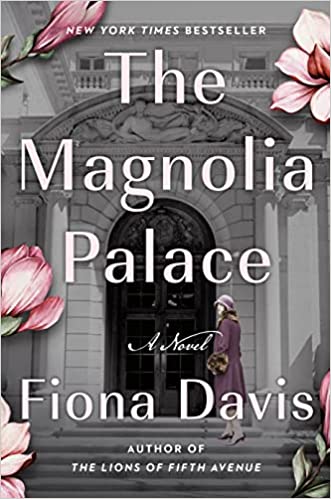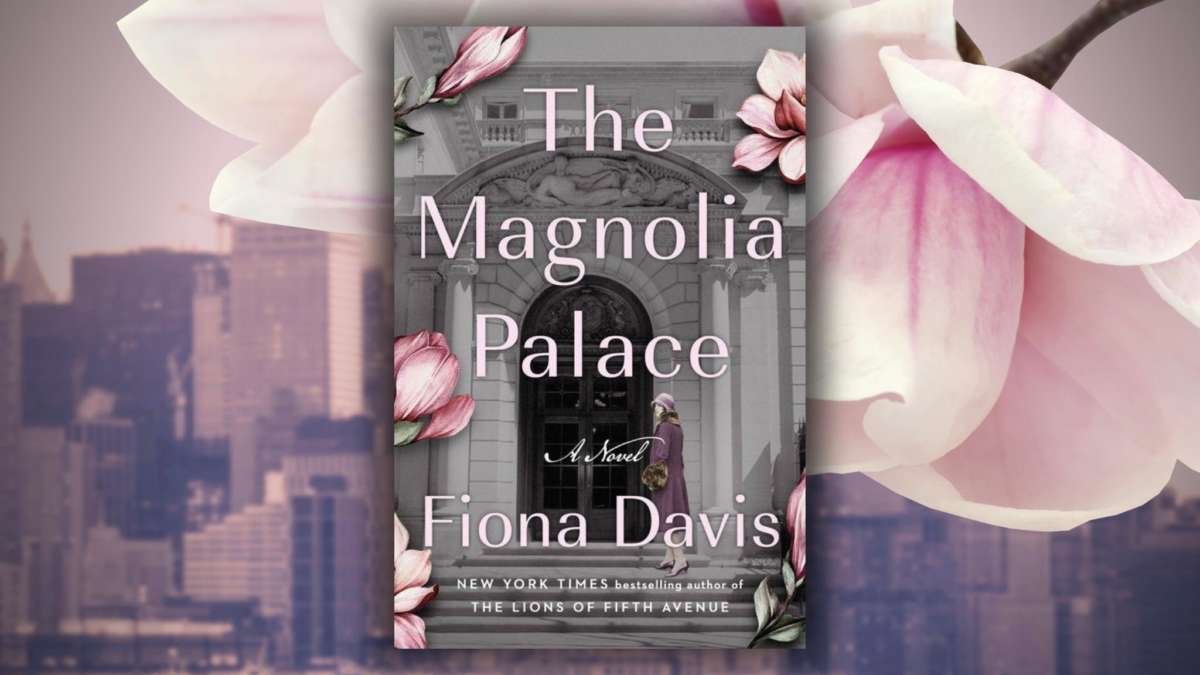The Magnolia Palace by Fiona Davis
The stories embedded in the architectural masterpieces of New York City have long intrigued Fiona Davis, whose new novel, The Magnolia Palace (Dutton), is set in a Fifth Avenue mansion that happens to house one of the finest art collections in the world.
The industrialist Henry Clay Frick, who made his Gilded Age fortune in coke and steel, built the neoclassical palace just before World War I. He filled its ornate rooms with European fine and decorative arts, including iconic paintings by Holbein, Vermeer, Rembrandt and Titian. Frick, his wife Adelaide, and their daughter Helen occupied the luxurious mansion alongside the Old Masters and various assistants, secretaries, housekeepers and even an organist, who worked night and day to make the Fricks’ lives as effortless as possible.
Of course, all of the butlers in the world cannot bring happiness to a palace. So it was that misery, secrets and grudges lay therein.
UNCOVERING WHAT LIES WITHIN
The enterprising son of an immigrant Mennonite farmer who settled in coal-rich southwestern Pennsylvania, Frick started his career in the coke production business. Coke is highly processed coal, an essential component of steel and iron. As Pittsburgh became a center of steel manufacturing, the demand for coke rose exponentially. Eventually, Frick went into business with the steel magnate Andrew Carnegie. Both men were strongly opposed to organized labor and ordered Pinkerton guards to open fire on strikers at the Homestead steel mill in 1892. 10 men were killed. The tragedy cemented Frick’s fearsome reputation. In The Magnolia Hotel, Frick’s hard-heartedness permeates every interaction he has with his family and employees.
As always, Fiona Davis flexes her imagination, enabling readers to move back and forth in time on the way to discovering whatever has been buried by the passage of years. In The Magnolia Palace, her depictions of American culture in 1919, on one hand, and in 1966, on the other, create a striking juxtaposition.
Two young women — one an artist’s model whose face and body grace Beaux-Arts buildings all over Manhattan, the other an aspiring fashion model out of swinging London — find themselves puzzling over love and death in the Frick mansion, 47 years apart. The plot is the author’s most ambitious to date.
AMBITIOUS TRUE CHARACTERS, AMBITIOUSLY DEPICTED
Lillian Carter, who recently lost her mother in the 1918 Spanish flu pandemic, is fleeing trumped-up charges of being an accessory to murder when she lucks into the position of private secretary to the heiress Helen Clay Frick. Cerebral, imperious and needy, Helen is haunted by her sister, Martha, who died tragically at the age of five. In the minds of Helen’s parents, still grief-stricken, Martha remains the superior child.
Secretly charged by Henry Clay Frick with making a social success of Helen, not to mention a love match between Helen and her reluctant suitor, Lillian becomes embroiled in investigations of the industrialist’s death and the sudden disappearance of a gem, all while trying to keep her true identity secret.
Nearly 50 years later, Veronica Weber has also lucked into a professional opportunity: a Vogue photoshoot at what is no longer the Frick mansion but a museum called The Frick Collection (In 1935, after years of planning, Helen Clay Frick opened the museum to the public.) Outspoken, quick-witted and determined to earn a lot of money to support the mother and sister she left in dire straits back in England, Veronica — unlike the other models — refuses to capitulate to the whims of a photographer whose manner is as dictatorial as that of Helen Frick.
Fired by the photographer, then abandoned by him and his entourage as a blizzard descends on Manhattan, Veronica is trapped in the mansion, sans power, for three days. She soon finds company in the form of Joshua, a captivating, knowledgeable college student intern who is also stranded by the storm. When Veronica shows him some old papers she discovered while naughtily prowling around the building, they embark on a treasure hunt that ultimately unravels several longstanding mysteries involving the Frick family.
ANOTHER WINNER FROM FIONA DAVIS
There are many pleasures in Fiona Davis’s novels. Her stories inhabit Manhattan landmarks whose exteriors (and some interiors) can be viewed by the public, like Grand Central Terminal, the New York Public Library and The Frick Collection. From the street, the buildings’ edifices are austere, yet Davis imbues them with intimacy and familiarity through the deeply-felt emotions of her characters.
Equally intriguing are the points of intersection between generations of young women. While each is beset by her own personal and professional problems, they share a certain style. Quietly seeking the truth about themselves and the world, Davis’s heroines overcome pain and loss to reach a resolution, in the past and present.
Related Posts:
Fiona Davis’s “The Lions of Fifth Avenue:” A New York City Mystery of History
True Friendship Never Fades in Fiona Davis’ Latest
Fiona Davis Examines the Destructive Lure of Technology in Allegra Goodman’s ‘The Chalk Artist’
“The Masterpiece:” NYC’s Grand Central as One of the Stars





